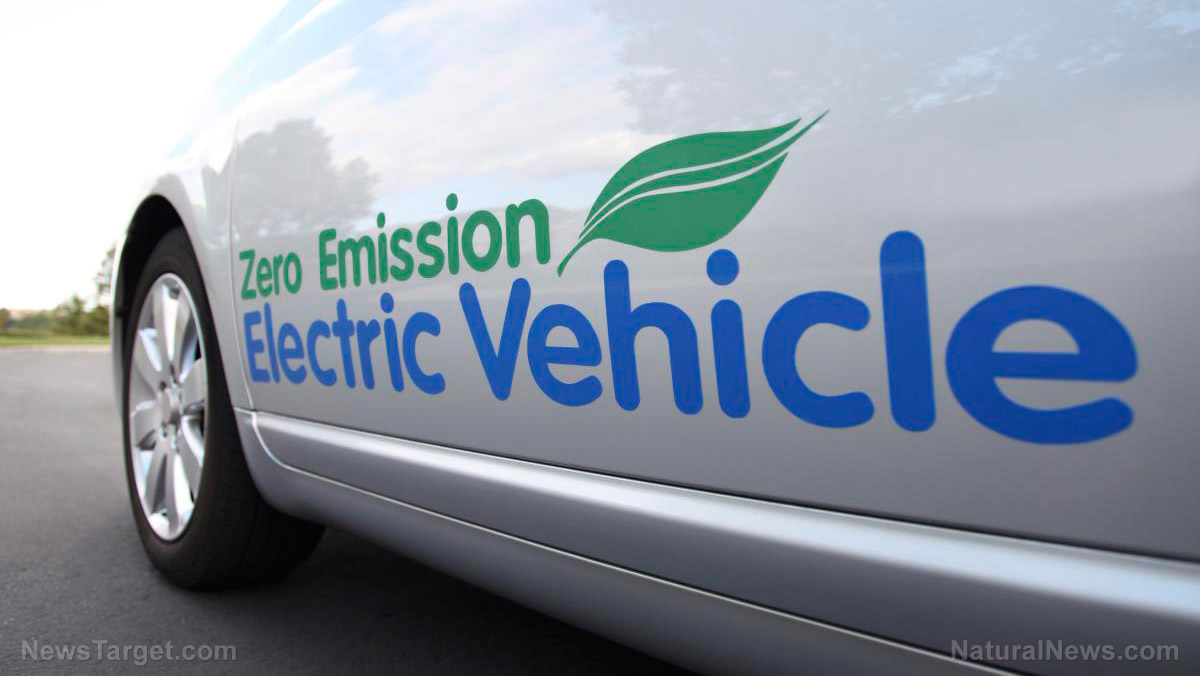Report: Electric vehicle sales to increase sharply by 2040, but that’s not all good for the environment
06/16/2021 / By Virgilio Marin

Sales of electric vehicles (EV) will dramatically increase over the next two decades, according to a new report released on June 9. But that increase is not going to be 100 percent beneficial to the environment due to the way EV batteries are manufactured and charged
The report, authored by research firm BloombergNEF (BNEF), analyzed the economic and technology trends in the road transport sector up until 2040. It focused on the electrification of passenger cars, commercial vehicles, buses, as well as two- and three-wheeled vehicles.
The report showed that global sales of zero-emission cars will increase from four percent of the current market in 2020 to 70 percent by 2040. Leaders such as the U.S., China and Europe ran far ahead of these figures, but low levels of adoption in emerging economies reduced the global average.
Sales of zero-emission buses, on the other hand, will go up from 39 percent in 2020 to 83 percent by 2040. Zero-emission light commercial vehicles, such as vans and pick-up trucks, will grow from one percent to 60 percent over the same time period. Meanwhile, medium and heavy commercial vehicles will soar from almost zero to just over 30 percent.
Based on these figures, BNEF estimated that EVs will represent a $7 trillion global market opportunity between today and 2030 and $46 trillion between now and 2050.
“The growth of electric transport is an amazing success story to date, and the future of the EV market is bright,” said Colin McKerracher, head of BNEF‘s advanced transport and one of the report authors.

But he noted that there are still more than 1.2 billion combustion engine vehicles on the road, and the global road fleet is not electrifying fast enough. “Reaching net zero by mid-century will require all hands on deck, particularly for trucks and other heavy commercial vehicles where the transition has barely started,” he said.
Indeed, the report showed that global EV sales should surpass predicted figures to bring global tailpipe emissions onto a trajectory compatible with net zero by 2050. For instance, the report predicted that sales of zero-emission passenger cars will hit 34 percent by 2030. But ideally, sales should reach nearly 60 percent in that year to achieve carbon neutrality in road transport.
Granted, existing trends showed that buses, as well as two- and three-wheelers are close to being on track to become carbon neutral by 2050. But some segments, particularly medium and heavy trucks, will take harder and longer to get there.
Nikolas Soulopoulos, commercial transport team lead at BNEF and one of the report authors, said that policymakers need to take urgent action to rapidly decarbonize heavy trucks. (Related: Political push to end gas-powered vehicles and replace them with electric cars a delusional pipe dream.)
“In addition to introducing tighter fuel economy or [carbon dioxide] standards for trucks, governments may need to consider mandates for the decarbonization of fleets. They should also consider incentives to push freight into smaller trucks, which can electrify faster than larger ones,” he said.
Increasing electric vehicles can harm the environment
Electrifying road transport will reduce tailpipe emissions on the road to virtually zero, but that doesn’t mean EVs are completely green. If EVs are charged on coal-heavy grids, then they still contribute to air pollution. In fact, they may even be worse for the climate than gas-burning vehicles.
“If you’ve got electric cars in Pittsburgh that are being plugged in at night and leading nearby coal plants to burn more coal to charge them, then the climate benefits won’t be as great, and you can even get more air pollution,” Jeremy Michalek, a professor of engineering at Carnegie Mellon University, told The New York Times.
Many countries are now pushing to clean up their electric grids, but it will take time before grids become completely carbon-free. And even if governments expedite the shift to clean energy, the fact remains that EVs are not 100 percent green. For one, batteries that power EVs require raw materials, such as lithium and cobalt, that are usually sourced through environmentally destructive mining practices.
Cobalt mining, for example, generates hazardous tailings and slags that can leach into the environment, and research shows that communities near mines are exposed to high levels of cobalt and other metals. In addition, extracting metal from ores requires a process called smelting, which can emit sulfur oxide and other air pollutants. (Related: The big electric vehicle LIE: Electric cars are not “zero emissions,” and their ecological impact is actually dirtier than diesel trucks.)
Overall, bringing more EVs on the road may have some benefits, but it can still harm the environment due to the way they are currently charged and manufactured.
Sources include:
Tagged Under: carbon neutrality, cars, Climate, combusion engine, decarbonization, economy, electric cars, electric vehicles, environ, environment, EVs, future cars, future science, future tech, green, green deception, green energy, green technology, mining, Net Zero, research, technology, trucks, zero emissions, zero-emission cars





















